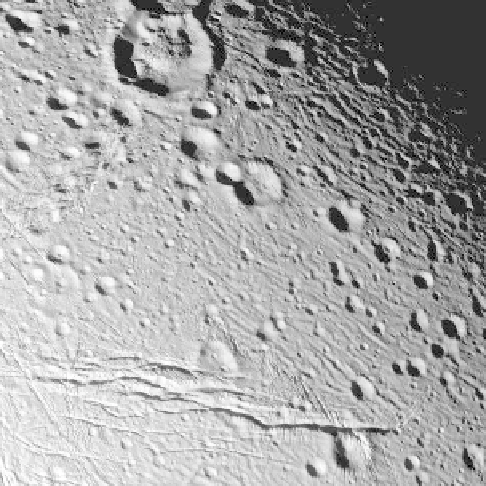Geology Reference
In-Depth Information
Figure 9.18. A mosaic of images for Enceladus with key place names (from Roatsch et al.,
2009
).
Figure 9.20. Tectonic deformation indicates the geologic activity of
Enceladus; the prominent fracture-graben system seen here, named
Labtayt Sulci, is as wide as 5 km and extends more than 100 km
(NASA PIA06191).
Figure 9.19. A Cassini image of Enceladus showing cratered terrain,
including a dome-
oored crater (upper left) about 21 km in diameter
(NASA PIA06210).
grooves that are less than a few hundred meters wide are
also seen, especially in the fractured terrains.
By far the most exciting aspect of Enceladus is the
long-lived erupting plumes, making this object one of
only a handful in the Solar System with con
rmed geo-
logic activity. Plumes are traced hundreds of kilometers
above the surface and erupt from jets in the south polar
region (
Fig. 9.21
). Repeated observations from Cassini
suggest that crustal deformation continued into recent
geologic times and could even be active today. The largest
tectonic features are canyons such as Labtayt Sulci, which
is 200 km long and up to 10 km wide. Narrow linear




